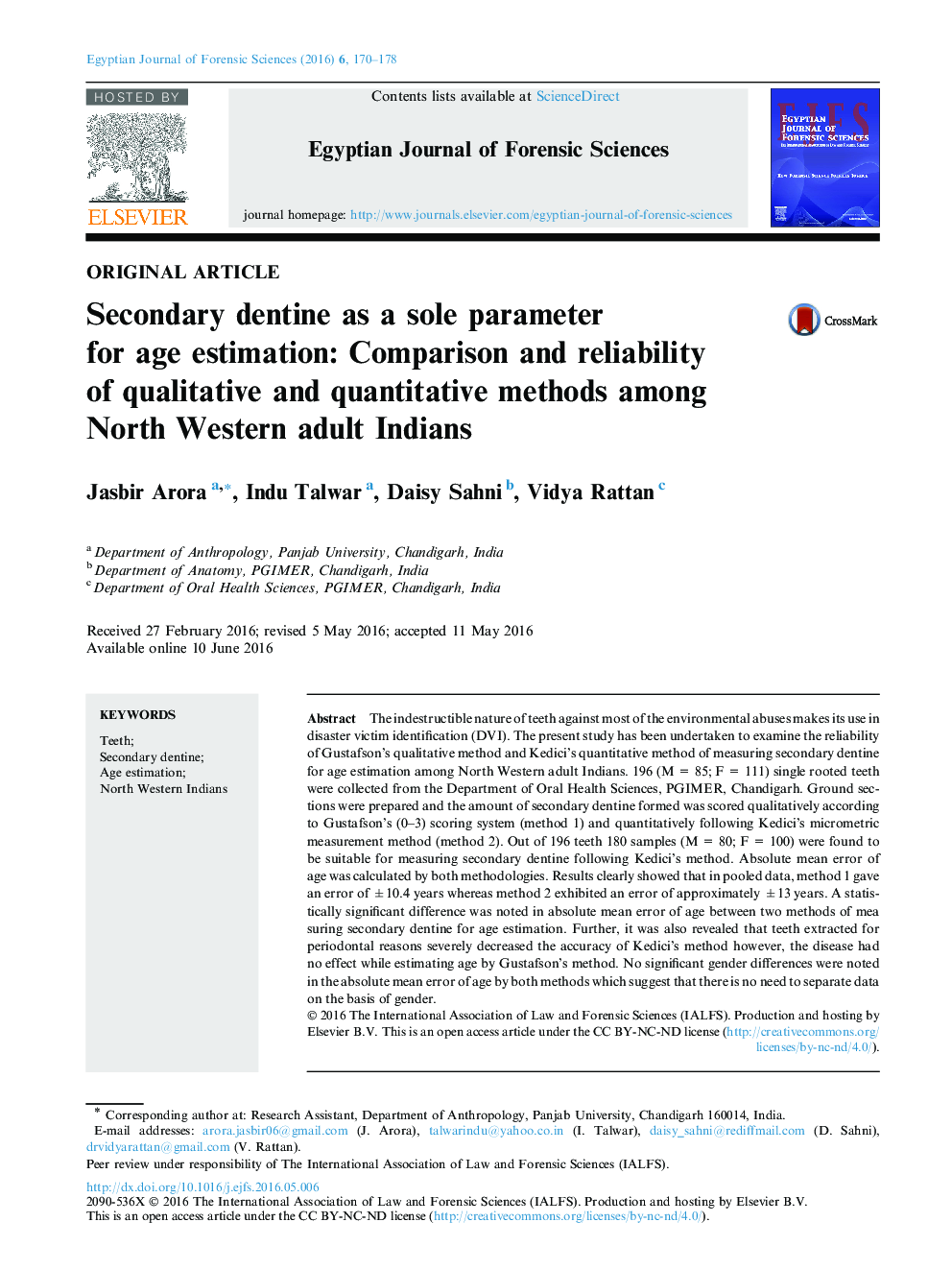| Article ID | Journal | Published Year | Pages | File Type |
|---|---|---|---|---|
| 1097433 | Egyptian Journal of Forensic Sciences | 2016 | 9 Pages |
The indestructible nature of teeth against most of the environmental abuses makes its use in disaster victim identification (DVI). The present study has been undertaken to examine the reliability of Gustafson’s qualitative method and Kedici’s quantitative method of measuring secondary dentine for age estimation among North Western adult Indians. 196 (M = 85; F = 111) single rooted teeth were collected from the Department of Oral Health Sciences, PGIMER, Chandigarh. Ground sections were prepared and the amount of secondary dentine formed was scored qualitatively according to Gustafson’s (0–3) scoring system (method 1) and quantitatively following Kedici’s micrometric measurement method (method 2). Out of 196 teeth 180 samples (M = 80; F = 100) were found to be suitable for measuring secondary dentine following Kedici’s method. Absolute mean error of age was calculated by both methodologies. Results clearly showed that in pooled data, method 1 gave an error of ±10.4 years whereas method 2 exhibited an error of approximately ±13 years. A statistically significant difference was noted in absolute mean error of age between two methods of measuring secondary dentine for age estimation. Further, it was also revealed that teeth extracted for periodontal reasons severely decreased the accuracy of Kedici’s method however, the disease had no effect while estimating age by Gustafson’s method. No significant gender differences were noted in the absolute mean error of age by both methods which suggest that there is no need to separate data on the basis of gender.
